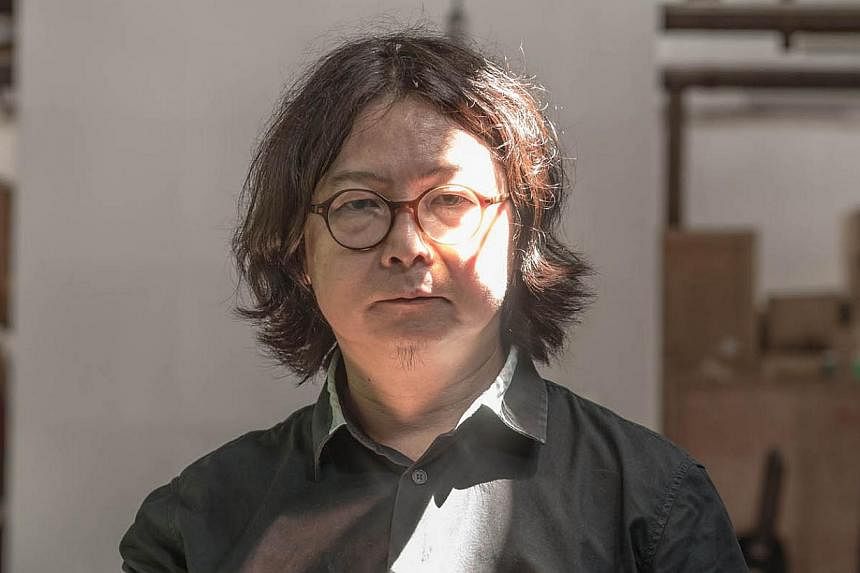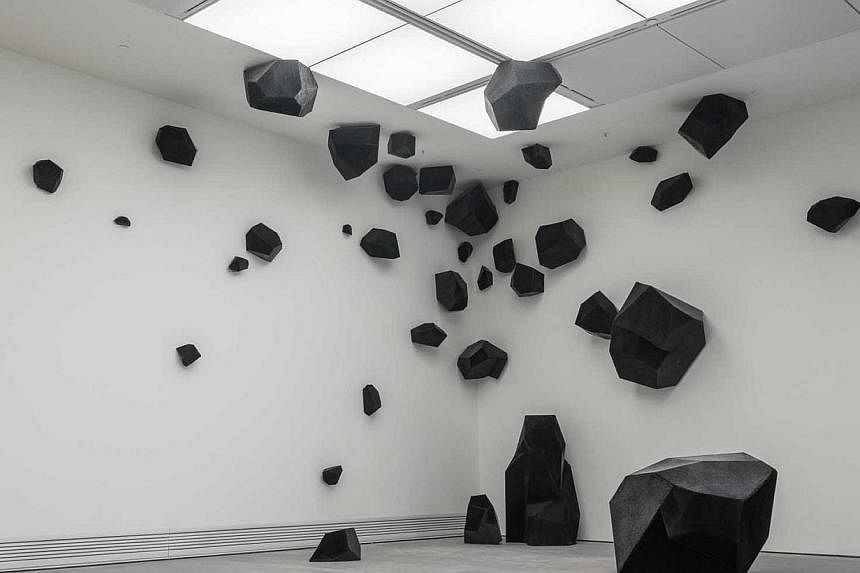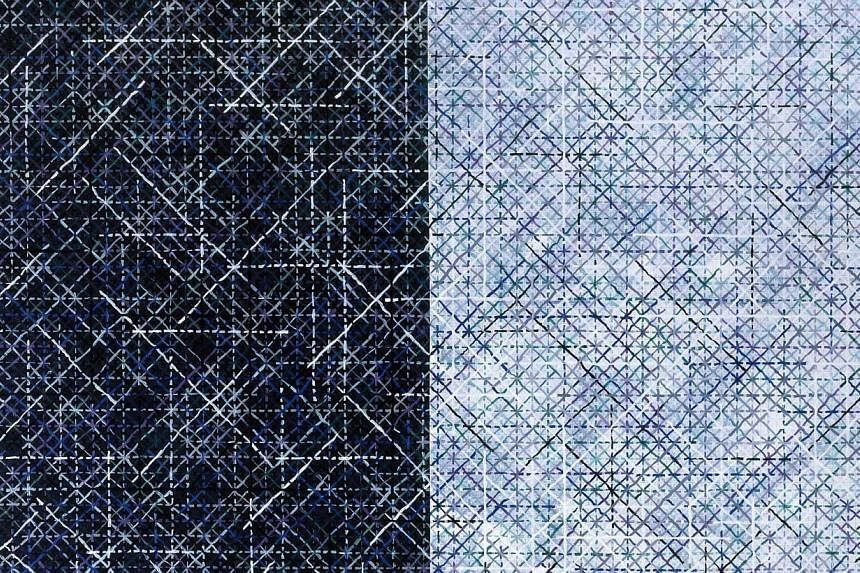At first glance, Chinese artist Ding Yi's latest works look like aerial photos of cities after dark, lights twinkling on the urban grid.
Built around an almost-obsessive use of crosses, which grow and morph into asterisks and starbursts, his recent abstract paintings are executed in black, purple and midnight blue.
Ding, who started using the cross as a motif in 1988, says: "I wanted to break away from traditional Chinese art and create something without obvious leanings and clear interpretation, to paint without meaning between the lines.
"I wanted to make art that was not art-like."
The Appearance Of Crosses series is on show in Ivory Black, the 53-year-old artist's first solo exhibition in South-east Asia, at the Gillman Barracks.
Squint, use a dollop of imagination and the paintings could be a pixellated rendering of his native city.
As a child during the Cultural Revolution, Ding lived in a muted Shanghai stripped of expression. Garish propaganda displays of Mao Zedong and communist workers enveloped buildings facades.
"I remember watching the artists who painted at a cinema opposite my home, seeing how they went about their work," he writes in an e-mail interview. "The end products attracted me."
Adds the artist, who is a professor of visual arts at Shanghai's Institute of Visual Art: "Having witnessed Shanghai's growth over the past 30 years, I'm very attached to this city."
Referencing a series of colour abstract paintings he made in the 1990s - all of crosses, in varying sizes and brilliant hues of yellow, green and red - he says: "For 12 years, I worked on a series that was fluorescent-themed, which depicted the city's energy and majesty as it transformed."
Widely regarded as a pioneer in abstract art on the Chinese scene, he spent his teenage years learning traditional Chinese ink and oil painting at Shanghai University before a professor exposed him to Western modernism.
After experimenting with different painting styles and studying the works of French painters such as Paul Cezanne and Henri Matisse, he settled on the cross as his trademark style.
More than 60 per cent of his works have sold since the launch of Ivory Black on Jan 22 - the priciest being a 2014 painting from the Appearance of Crosses set that went for $426,000, a Singapore representative for ShanghArt Gallery told Life!.
Several of the paintings were displayed at Singapore's premier art fair, Art Stage, last month. Ding, who stopped by Singapore then, was among artists who exhibited at the Gillman Barracks' Art After Dark event.
His latest art installation, Flying Stone, also on display at his solo show, features a cluster of black "rocks" (fashioned from metal frames and fake fur cloth) that look more like freshly spewed volcanic discharge than art pieces.
He says: "The stones are a metaphor for the unknown. They could be seen as an extension beyond the paintings and this challenges the ideas of duality - 3-D versus 2-D, objectivity versus subjectivity, black versus white. The viewer doesn't see my work only, but has to imagine more."
Despite using only crosses in his art, Ding's works are far from prosaic - he overlays them on one another, switching up colours and patterns to create textures within his grids.
As a result, his paintings sometimes resemble textile patterns, a comparison often made by critics.
Shanghai-based artist-curator Mathieu Borysevicz, who contributes to Artforum International Magazine, wrote in 2013 that Ding's work "has a macabre sense about it, almost reminiscent of graveyards in the West - fields and fields of crosses".
Ding, who is married and has a daughter, says: "When I embarked on this style, I sought to weld art with a medium that was non-art. I wanted to expand the understanding of art, so I even painted on cloth itself. By linking design to art, we can push the boundaries of what art is."
Despite his accomplishments, he is not stopping - he has been working up to 12 hours a day in preparation for exhibitions at home, and in Germany and the United States later this year.
"I won't be retiring soon. I don't think I've hit my peak yet. When I create art, I'm filled with anticipation for the outcome," he says.




